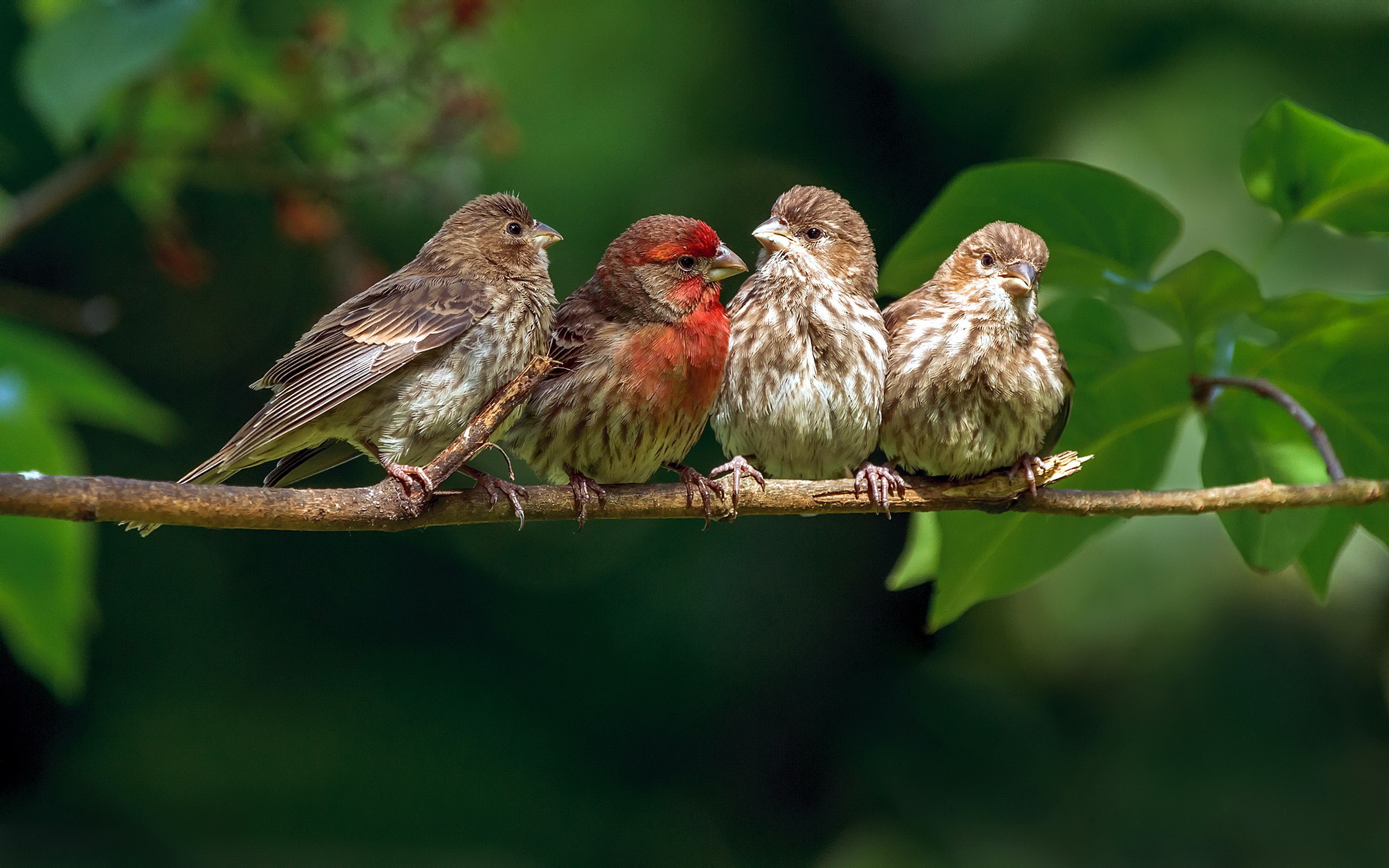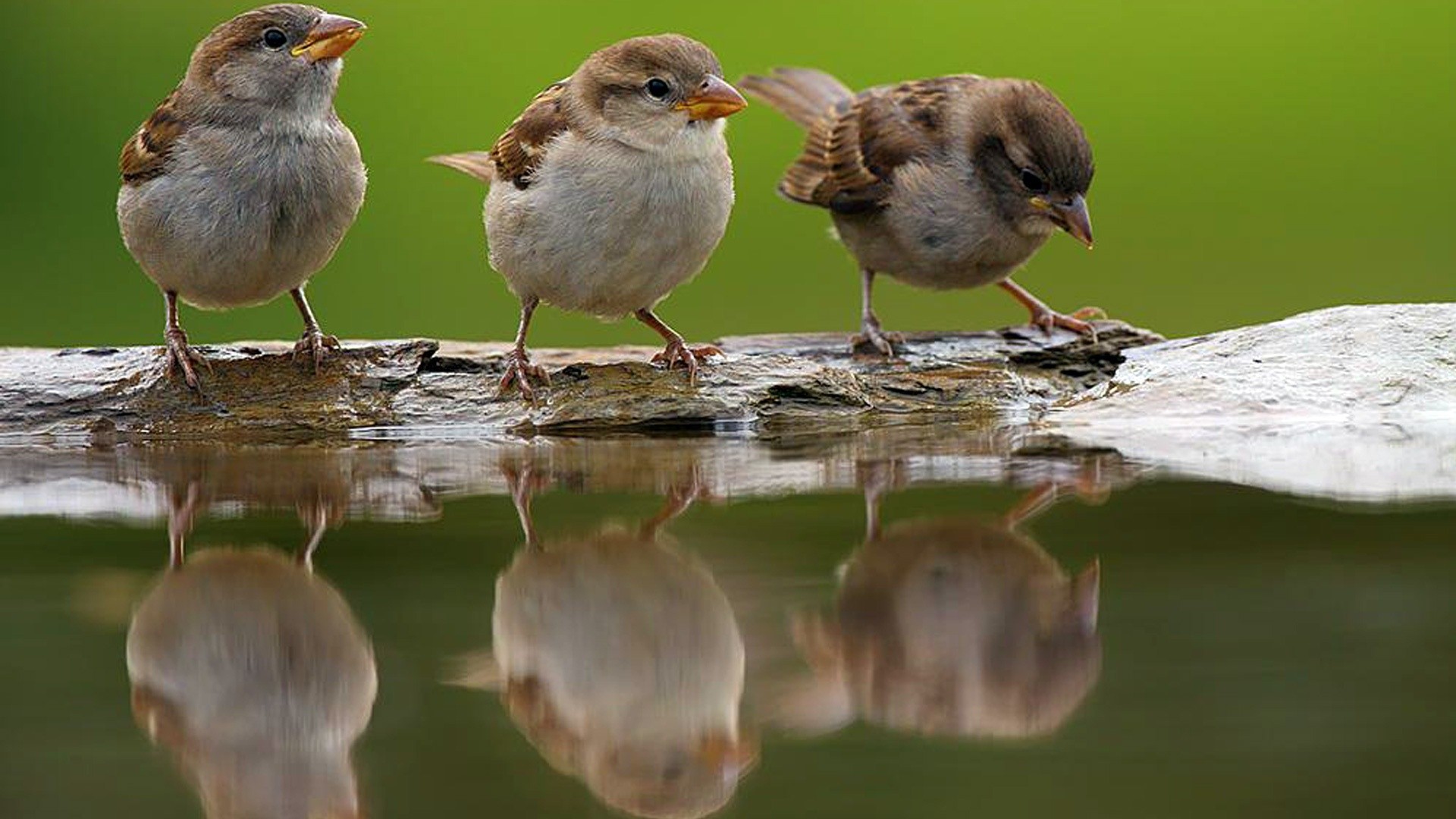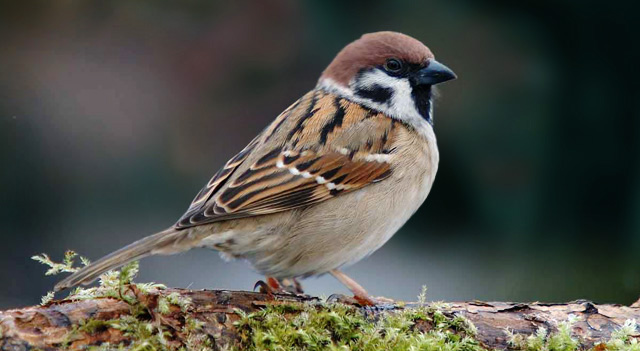
The twenty-seven species of OldWorld sparrows
are closely related to weaver finches and were
once grouped with them in the family Ploceidae
before being placed in their own family. They are
all small, seed-eating birds that occupy a wide variety
of habitats throughout Eurasia and Africa.
Over half of the true sparrows (Passer) coexist well
in human habitations and at least one, the house
sparrow, has for so long adapted to exist in humanmodified
landscapes that it is no longer found naturally
in the wild. House sparrows coexist with
humans in habitats and climates ranging from
tundra to tropics. Other Passer species occur in
habitats as diverse as desert, woodlands, or tropical
rain forests. Dry brush country and mountain
habitats are occupied by species of rock sparrows
(Petronia) which may range upward of fifteen
thousand feet in the Himalayas.
Males claim nest sites and sing to attract
females and deter other males. Following pair formation both sexes help build the nest.ManyPasser
species, such as tree sparrows (Passer montanus),
are solitary nesters, usually nesting in tree cavities,
but some are at least partly social and nest in
loose aggregations. Several species also build a
ball-shaped nest with a feather-lined interior and
an entrance toward the side. Depending on species,
from two to eight whitish or mottled eggs
are laid in a clutch, generally fewer in the tropics
and more in temperate zones. Incubation is brief,
generally eleven or twelve days, and the young
remain in the nest for another two weeks (up to
seventeen days). The young are fed on a variety
of foods, mostly seeds and insects, but discarded
bits of human food, grains, and other discarded
edible substances are often readily used to feed
the young.
Some Typical Sparrows and Finches
The northern cardinal (Cardinalis cardinalis) belongs
to the subfamily Carduinalleae. Males are
bright "cardinal" red with black about the bill.
Females are a duller brown-red. Both have a distinctive
crest. The species is widespread throughout
eastern North America, in western North
America from the Great Plains
south and west into California, Arizona,
New Mexico, Texas, and
into Mexico. It is essentially nonmigratory
and winters in the same
general area. The cardinal's range
has expanded northward in recent
years, especially intoNewEngland,
and it has been successfully
introduced in Hawaii.
Cardinals dwell in mostly edge
habitats, especially the interface of
woodland and meadow, and edges
of swamps of shrubby wetlands,
especially areas that offer shrubby
evergreens for nesting. They have
adapted well to human-modified
landscapes and commonly nest in
landscaped yards in which the mix
of ornamentals and grass essentially
mimics its natural habitats.
One of the earlier nesting species,
cardinals may claim their territories
in late February. The female
typically constructs a nest
of leaves, weeds, grasses, and thin
bark strips in dense shrubbery, often
in either evergreens or vine
tangles from one to twenty feet
high, but generally lower. Clutch size is generally
three or four spotted white eggs which hatch in
about twelve to fourteen days. Three broods may
be raised in a season in southern states, about two
broods inmore northerly states. The young are fed
seeds and small insects. Adults divide roles and
responsibilities to raise a second and sometimes a
third family; the male cares for the first brood
while the female incubates the second brood. The
young and adults also form family groups that
may remain together in fall. Groups often form
loose flocks of up to seventy birds in winter. Cardinals
are common birds at feeders.
The American goldfinch (Carduelis tristis) belongs
to the family Fringillidae. It is widespread in
North America, breeding from southern Canada
southward to Gulf Coast states, west to California.
At least partially migratory, it winters along the
Gulf Coast and Florida but may winter anywhere
in its breeding range in mild winters.
The American goldfinch is a bird of fields and
open woodlands. It is a late-nesting species, often
not beginning until August in its northern range,
late May or June in western and more southern
states. Nests are constructed in branch forks, often
from one to thirty feet high. The highly compact,
cup-shaped nests are lined with thistle or thistledown
and are so tightly constructed that they
hold water-young sometimes drown following
heavy rainstorms when the nest is flooded. Generally
four to six (usually five) bluish eggs are laid
and incubated by the female for about two weeks.
The male attends the incubating female at the
nest, bringing her food.
Young are fed by regurgitation as the parents
first fill their crops with dandelion, burdock, thistle,
or chicory seeds, berries, and insects, then regurgitate
or cough them up to feed each of the
young. Seeds are usually augmented by insects,
especially caterpillars, grasshoppers, aphids, and
plant lice.
The house sparrow (Passer domesticus) belongs
to the family Passeridae. It is the most widely distributed
of Old World sparrows, ranging across
Eurasia and Africa and successfully introduced in
South America and Australia. Repeated introductions
of birds in North America between 1850 and
1867 resulted in the establishment of this aggressive
songbird. At the turn of the last century
(1900), it was probably the most abundant bird in
North America but has declined with the switch
to combustion engine vehicles, for it fed on the
scattered feed grain fed to horses. The house sparrow
gathers in large winter roosts in urban and
suburban areas or evergreen plantations.
House sparrows are aggressive cavity nesters.
Their success has at least partly been at the cost of
other cavity nesters such as bluebirds and swallows.
Nesting sites are selected in cultivated areas,
especially buildings, outbuildings, farms, and
edge habitat between urban and suburban landscapes
and natural landscapes. Artificial cavities,
including nest boxes, are also readily appropriated
by this adaptable species. The nest of small
twigs and leaves is lined with grasses, feathers,
hair, and bits of paper and other discarded materials.
The four to six white or greenish eggs are incubated
for about fourteen days. Young are brooded
by the female and fed mostly insects and spiders,
along with seeds and blossoms.
Sparrows Facts
Classification:
Kingdom: Animalia
Phylum: Chordata
Subphylum: Vertebrata
Class: Aves
Order: Passeriformes
Families: Fringillidae (New World sparrows);
Emberizidae; Passaridae (Old World sparrows)
Geographical distribution: All continents, except Madagascar
and South Pacific islands
Habitat: Prefer temperate regions, although some species are
found in Arctic, desert, tropic, and subtropical regions
Gestational period:Varies by species, but most eggs are incubated
for eleven to fourteen days
Life span: Varies; three to ten years in the wild, five to eight years
in captivity
Special anatomy: Beaks adapted for gathering, holding, crushing,
and eating seeds; finches have nine primary wing feathers and
twelve tail feathers; melodious song
Other popular Animals
Photo Gallery of - Sparrows








 Animalia Life
Animalia Life